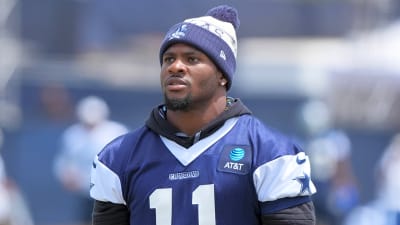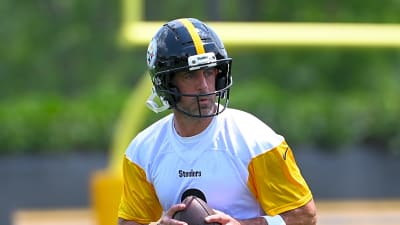
Planning as a college football head coach is becoming exponentially more important by the day as we enter the revenue-sharing era in August. DeShaun Foster and his UCLA program made it a point to get ahead of the curve in terms of how they'll distribute revenue with their players.
The second-year head coach the changing landscape at Big Ten Media Days and their plan to distribute among players based on availability.
"We went completely off your ability," Foster said on how he is distributing the revenue-sharing money. "[We're] going to evaluate the talent and then place into where we think we need to pay them. Everything went good. The players understood that. They fired up about the situation and they loved that we had people explain to them, 'how you're getting this money,' or, 'why you're not getting this money,' and I think that resonated with our players."
Foster and the Bruins haven't publicly revealed how much each player is making, but, as he explained, starters and people higher on the depth chart will be receiving a bigger sum of the revenue than younger, more raw players who won't be playing as much as their counterparts.
What is Revenue Sharing?
College sports is entering a historic era of change after a settlement was agreed to in the House v . NCAA class action lawsuits that would allow universities to share revenue with its student-athletes.
Under the monumental settlement, UCLA will be allowed to distribute a max amount of $20.5 million among its student-athletes. UCLA athletic director Martin Jarmond and the university have agreed to share all of it, citing that the athletes are an integral part of helping athletics compete at the highest level.
“This is a pivotal moment in collegiate athletics, and we have to continue to invest in our athletics program to compete at the highest level,” Jarmond told The Times. “That’s why student-athletes come to UCLA, to get the best education and compete at the highest level, and we must invest in our student-athletes to provide that championship-level experience.”
Jarmond revealed that a bigger portion of the share will be distributed to football and men's basketball because they are the biggest drivers in revenue among all sports programs, which is natural. He did not share specifics, but he ensured that he will do everything possible to move Westwood's programs toward success.
"We have to be bold and innovative in this new world,” Jarmond said. “UCLA has always been on the forefront and been a leader and that’s not going to change. We will embrace this new era and we will continue to support our student-athletes at a championship level.”
How will this impact UCLA?
Some may think that this ruling will only favor the powerhouse football programs in the country. The Ohio States, Georgias, Alabamas, even USCs of the world. But here's why this is a great opportunity for the Bruins football program to take the next step.
UCLA being able to compensate it's athletes to their full potentials is appealing enough, never mind the seemingly infinite amount of opportunities around the Los Angeles area for those athletes to further monetize their names, images and likenesses.
Per the settlement, NIL deals for athletes that exceed $600 must be approved NIL Go, a creation of the College Sports Commission to ensure that deals are serving actual business purposes.
This is huge news for UCLA after joining a powerhouse Big Ten Conference that is filled with programs that have been able to widen the gap in the NIL era with their richer collective groups. An essential salary cap has been applied to all universities and students now have similar opportunities for monetization in and out of athletic programs as profesisonal athletes.
Los Angeles' market and UCLA's outright culture shift under Foster could attract bigger prospects in the future.
UCLA seems well-positioned in this new historic era of college football.
More must-reads:
- Jerry Jones is getting exactly what he wants with Micah Parsons drama
- Tyreek Hill reacts to Tua Tagovailoa's fiery comments after WR's controversies
- The '2024-25 NFL TD catch leaders' quiz
Breaking News
Trending News
Customize Your Newsletter
 +
+
Get the latest news and rumors, customized to your favorite sports and teams. Emailed daily. Always free!








